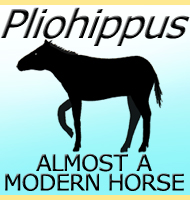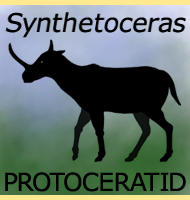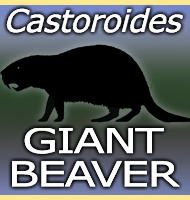


Paleoparadoxia
Name:
Paleoparadoxia
(Ancient puzzle).
Phonetic: Pay-le-o-pah-rah-dox-e-ah.
Named By: R. H. Reinhart - 1959.
Classification: Chordata, Mammalia, Desmostylia.
Species: P. tabatai (type),
P. media, P. repenningi, P. weltoni.
Diet: Herbivore.
Size: Around 2.2 to 2.5 meters long.
Known locations: Japan - Haraichi Formation,
Haratajino Formation, Kurosedani Formation, Nagura Formation,
Niwaya Formation, Satiama Prevecture, Sekinohana Formation,
Tonokita Formation, Ushikubitoge Formation, Yamanouchi Formation.
USA, California - Ladera Sandstone Formation, Monterey
Formation, Oclese Sand Formation, Santa Margarita Formation,
Skooner Gulch Formation, Temblor Formation, Topanga Formation.
Mexico, Baja California - Torgugas Formation.
Time period: Aquitanian through to the Tortonian of
the Miocene.
Fossil representation: Remains of multiple
individuals.
The
first description of Paleoparadoxia remains was
published in 1939
by Tokunaga as Cornwallius tabatai. The genus Paleoparadoxia
was not
named until 1959 when R. H. Reinhart published a review of the
Sirenia and Desmostylia. Paleoparadoxia was a
large quadrupedal
mammal that has been identified as a member of the Desmostylia (type
genus Desmostylus).
Like other members, the large bulk of the
body of Paleoparadoxia meant that it would have
been fairly cumbersome
on land, but like its relatives, Paleoparadoxia
would have actually
ventured into the water to feed upon submerged aquatic plants.
When
in the water, the large body and resulting body weight would have
been supported by the water. This means that while swimming
Paleoparadoxia might have been quite graceful in the
same way that
hippos are quite nimble when they are submerged in the water. The
lack of specialised aquatic features such as limbs modified into
flippers, means that even though Paleoparadoxia
swam in the sea, it
probably restricted itself to the shallows. Relatively shallow water
environments would have also had the greatest abundance of plant growth
since the shallows would have had a greater concentration of sunlight
as well. The mouth of Paleoparadoxia is broad and
bucket shaped which
means it was likely capable of scooping up large quantities of plant
matter with a single bite.
Because
Paleoparadoxia still had functioning legs and feet,
it of course
would have returned to the land. It is impossible to say if mating
and birth took place on land or in the water where buoyancy could have
supported the individuals, though other large mammals are known to be
capable of not needing to enter the water. Paleoparadoxia
however
almost certainly rested and slept on land however, and by being able
to walk, it may have been able to enter bodies of water such as
lagoons rather than just relying upon the sea.
Paleoparadoxia
certainly did swim in coastal regions of the sea since its remains have
been discovered in Japan and the Western coasts of the USA and Mexico.
Rather than swim across several thousand miles of open and deep water
with nothing to eat, Paleoparadoxia were likely
spread across the
entire Northern rim of the Pacific Ocean, from what is now known as
mainland Asia, Beringia (better known as the Bering land bridge but
is now submerged), to Canada and the Upper United States. By
hugging the coastlines, Paleoparadoxia would have
had both access to
food and areas to rest, and future fossil discoveries, especially
from Miocene age rock, may one day reveal a more complete
distribution of this genus.
Further reading
- A review of the Sirenia and Desmostylia, R. H. Reinhart -
1959.
- The Stanford Skeleton of Paleoparadoxia
(Mammalia:
Desmostylia), N. Inuzuka - 2005.
- A new early Miocene species of Paleoparadoxia
(Mammalia:
Desmostylia) from California, J. M. Clark - 1991.
- An outline of the Miocene cetotheres of Japan, T. Kimura and
Y. Hasegawa - 2004.
- Desmostylian fossils from the Yatsuo Group in Toyama Prefecture,
Central Japan and their paleoenvironments, K. Kaneko and N.
Inuzuka - 1992.
- Miocene marine vertebtates from San Clemente Island, California,
E. D. W. Mitchell and J. H. Lipps - 1964.
- A partial skeleton of Paleoparadoxia from
San-yama, Ogano-cho,
Saitama Prefecture, central Japan, H. Saegusa - 2002.
- A smaller manus of the Paleoparadoxia
(Mammalia: Desmostylia)
from the Haratajino Formation, Tomioka Group, Gunma, Japan,
H. Yoshikazu, K. Toshiyuki & M. Ryosuke - 2006.
- Desmostylian tooth remains from the Miocene Tokigawa Group at
Kuzubukuro, Saitama, Japan, K. Shimada & N.
Inuzuka - 1994.
- Paleoparadoxia tabatai from Yanagawa-machi,
Fukushima
Prefecture, Northeastern Japan, Y. Hasegawa and Y. Taketani
- 1994.
- A new name for the 'Stanford Skeleton' of Paleoparadoxia (Mammalia,
Desmostylia). - Journal of Vertebrate Paleontology. 27 (3): 748–751. -
D. P. Domning & L. G. Barnes - 2007.
- Bone Inner Structure Suggests Increasing Aquatic Adaptations in
Desmostylia (Mammalia, Afrotheria). - PLOS ONE. 8 (4): e59146. - Shoji
Hayashi, Alexandra Houssaye, Yasuhisa Nakajima, Kentaro Chiba, Tatsuro
Ando, Hiroshi Sawamura, Norihisa Inuzuka, Naotomo Kaneko, &
Tomohiro Osaki - 2013.
----------------------------------------------------------------------------
Random favourites
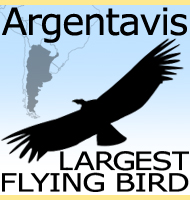 |
 |
 |
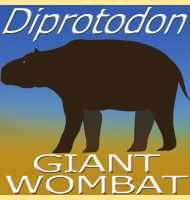 |


